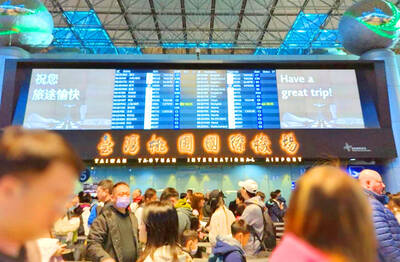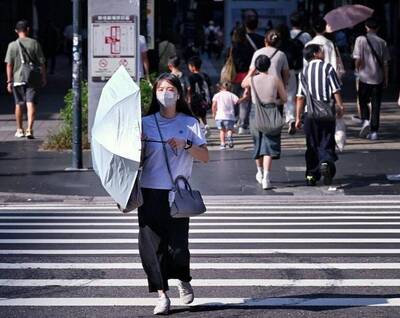The military is to mount two tank guns purchased from the US on domestically made armored vehicles to aid in the research and development (R&D) of mobile gun systems, sources said on Saturday.
Two sets of M68A2 105mm tank guns are to be mounted on Taiwanese-built CM-32 Clouded Leopards, the sources said.
The official R&D would start next year, and the military hopes to produce two prototypes by 2023, they added.

Photo courtesy of the Military News Agency
A 105mm tank gun is expected to be the main weapon of armored vehicles, with a secondary system to incorporate a 7.62mm coaxial machine gun with a 12.7mm remote-controlled machine gun turret.
Sources in the military said that armored vehicles using 105mm barrels are expected to replace outdated light tanks used by mechanized infantry battalions.
The new vehicles can provide increased mobility and firepower, they said.
However, as the vehicle chassis weighs about 30 to 40 tonnes, R&D would have to find ways to reduce the recoil of the 105mm barrel to 70 percent of equivalent cannons currently used by the military, sources said.
The US government on Dec. 4 last year approved the export of the weapons and is expected to ship them to Taiwan in September after live-fire testing.
The Chungshan Institute of Science and Technology has requested the equipment provider to include mechanical blueprints and six other technical documents, sources said, adding that the institute in January finalized and signed a Technical Assistance Agreement with the provider.
In addition to plans to produce two prototype vehicles by 2023, the Ministry of National Defense has said it also hopes to develop 105mm armor-piercing rounds.

Three Taiwanese airlines have prohibited passengers from packing Bluetooth earbuds and their charger cases in checked luggage. EVA Air and Uni Air said that Bluetooth earbuds and charger cases are categorized as portable electronic devices, which should be switched off if they are placed in checked luggage based on international aviation safety regulations. They must not be in standby or sleep mode. However, as charging would continue when earbuds are placed in the charger cases, which would contravene international aviation regulations, their cases must be carried as hand luggage, they said. Tigerair Taiwan said that earbud charger cases are equipped

Foreign travelers entering Taiwan on a short layover via Taiwan Taoyuan International Airport are receiving NT$600 gift vouchers from yesterday, the Tourism Administration said, adding that it hopes the incentive would boost tourism consumption at the airport. The program, which allows travelers holding non-Taiwan passports who enter the country during a layover of up to 24 hours to claim a voucher, aims to promote attractions at the airport, the agency said in a statement on Friday. To participate, travelers must sign up on the campaign Web site, the agency said. They can then present their passport and boarding pass for their connecting international

Temperatures in northern Taiwan are forecast to reach as high as 30°C today, as an ongoing northeasterly seasonal wind system weakens, the Central Weather Administration (CWA) said. CWA forecaster Tseng Chao-cheng (曾昭誠) said yesterday that with the seasonal wind system weakening, warmer easterly winds would boost the temperature today. Daytime temperatures in northern Taiwan and Yilan County are expected to range from 28°C to 30°C today, up about 3°C from yesterday, Tseng said. According to the CWA, temperature highs in central and southern Taiwan could stay stable. However, the weather is expected to turn cooler starting tonight as the northeasterly wind system strengthens again

Taiwan sweltered through its hottest October on record, the Central Weather Administration (CWA) said yesterday, the latest in a string of global temperature records. The main island endured its highest average temperature since 1950, CWA forecaster Liu Pei-teng said. Temperatures the world over have soared in recent years as human-induced climate change contributes to ever more erratic weather patterns. Taiwan’s average temperature was 27.381°C as of Thursday, Liu said. Liu said the average could slip 0.1°C by the end of yesterday, but it would still be higher than the previous record of 27.009°C in 2016. "The temperature only started lowering around Oct. 18 or 19